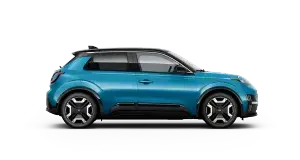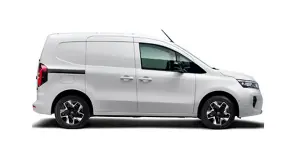Nissan LEAF 2023 Owners Manual
3.7.2. Improve driving range
The available driving range depends on a number of factors. Actual driving range will vary depending upon:
Speed and acceleration
Vehicle load
Electrical load from vehicle accessories
Traffic and road conditions
NISSAN recommends the following driving habits to help maximise driving range:
Before driving:
Follow recommended periodic maintenance.
Keep tyres inflated to the correct pressure.
Keep wheels correctly aligned.
Pre-heat or pre-cool the interior cabin while the vehicle is charging.
Remove unnecessary cargo from the vehicle.
While driving:
Drive in ECO mode
The ECO mode helps reduce power consumption by reducing acceleration when compared to the same accelerator pedal position in the D (Drive ) position (normal mode).
Drive at a constant speed. Maintain cruising speeds with a constant accelerator pedal position or by using the cruise control system when appropriate.
Accelerate slowly and smoothly. Gently press and release the accelerator pedal for acceleration and deceleration.
Drive at moderate speeds on the highway.
Avoid frequent stopping and braking. Maintain a safe distance behind other vehicles.
Turn off the air conditioner/heater when it is not needed.
Select a moderate temperature setting for heating or cooling to help reduce power consumption.
Use only the fan to help reduce power consumption.
In cold weather, use the heated seats (where fitted) and heated steering wheel (where fitted) as a substitute for air conditioner to help reduce power consumption.
Use the air conditioner/heater to control interior temperature and close windows to reduce drag when cruising at highway speed.
Release the accelerator pedal to slow down and do not apply the brakes when traffic and road conditions allow.
This vehicle is equipped with a regenerative brake system. The primary purpose of the regenerative brake system is to provide some power to recharge the Li-ion battery and extend driving range. A secondary benefit is the “engine braking” effect that operates based on Li-ion battery conditions. In the D (Drive) and B position, when the accelerator is released, the regenerative brake system provides some deceleration and some power to the Li-ion battery.
The vehicle driving range may be substantially reduced in extremely cold conditions (for example -20 °C (-4 °F)).
Using the climate control system to heat the cabin when the outside temperature is below 0 °C (32 °F) uses more electricity and affects the vehicle driving range more than when using the heater when the temperature is above 0°C (32°F).










